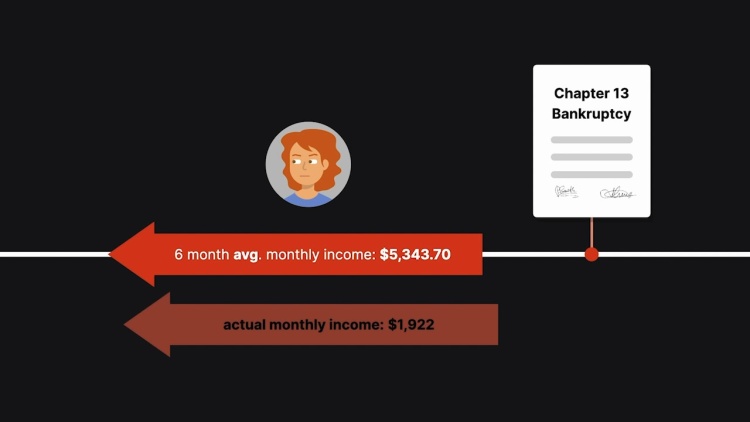Hamilton v. Lanning
United States Supreme Court
560 U.S. 505 (2010)

- Written by Denise McGimsey, JD
Facts
In October 2006, when Lanning (defendant) filed a Chapter 13 bankruptcy petition, she owed $36,793.36 in unsecured debt. On account of a buyout from her former employer earlier that year, her gross monthly income in April and May was greatly inflated, totaling approximately $27,346 over those two months. With the inflated payments, her average monthly income over the six months prior to filing bankruptcy was $5,343.70. Her current position paid just $1,922 per month. Lanning proposed a repayment plan under which she would pay $144 per month for 36 months. Hamilton, the Chapter 13 trustee (plaintiff), objected on the grounds that the plan would not satisfy all of the claims against her and did not fully commit her “projected disposable income” to creditors. Applying a “mechanical approach” that relied upon Lanning’s pre-bankruptcy income, the trustee proposed that she pay $756 per month over 60 months. The trustee conceded that Lanning would not be able to make those payments on her current income. The bankruptcy court approved Lanning’s plan on the condition that the term be extended to 60 months. The Court of Appeals for the Tenth Circuit affirmed, reasoning that the “mechanical approach” to determining projected disposable income was presumably correct but subject to rebuttal upon evidence of a significant change in the debtor’s circumstances. The trustee petitioned the Supreme Court for certiorari.
Rule of Law
Issue
Holding and Reasoning (Alito, J.)
Dissent (Scalia, J.)
What to do next…
Here's why 899,000 law students have relied on our case briefs:
- Written by law professors and practitioners, not other law students. 47,000 briefs, keyed to 994 casebooks. Top-notch customer support.
- The right amount of information, includes the facts, issues, rule of law, holding and reasoning, and any concurrences and dissents.
- Access in your classes, works on your mobile and tablet. Massive library of related video lessons and high quality multiple-choice questions.
- Easy to use, uniform format for every case brief. Written in plain English, not in legalese. Our briefs summarize and simplify; they don’t just repeat the court’s language.





